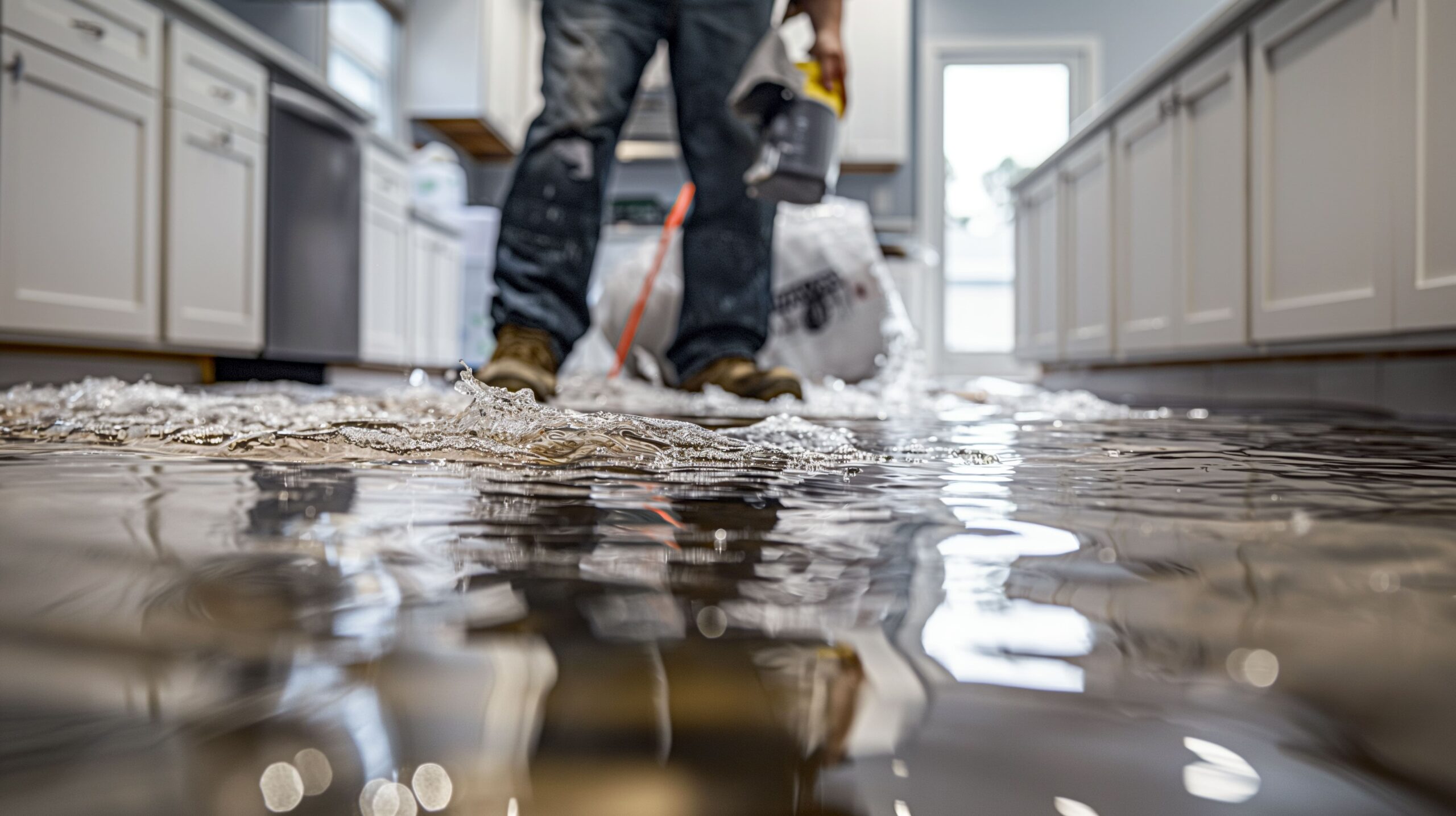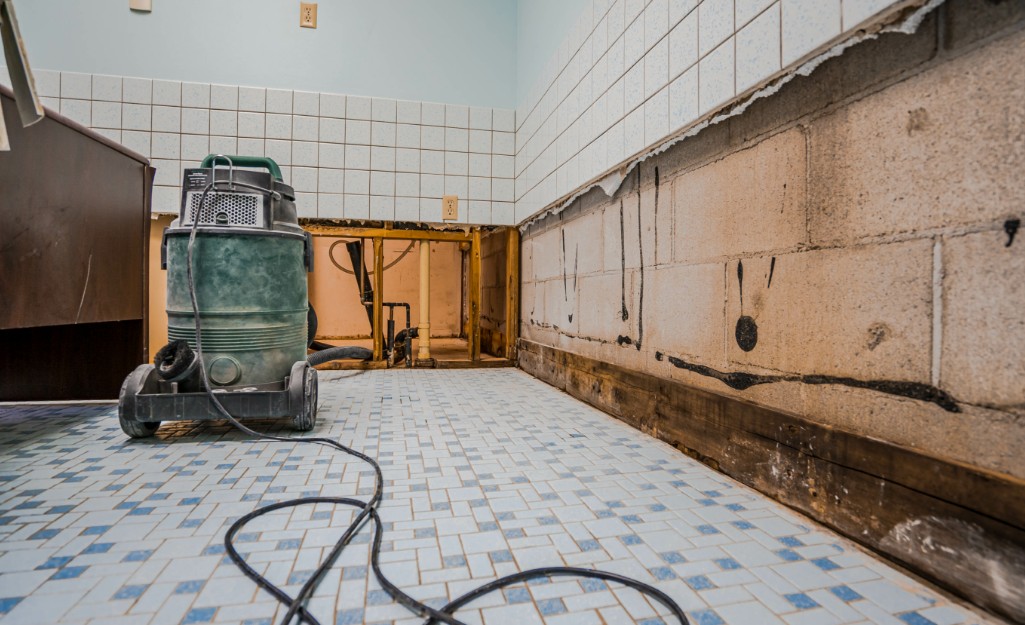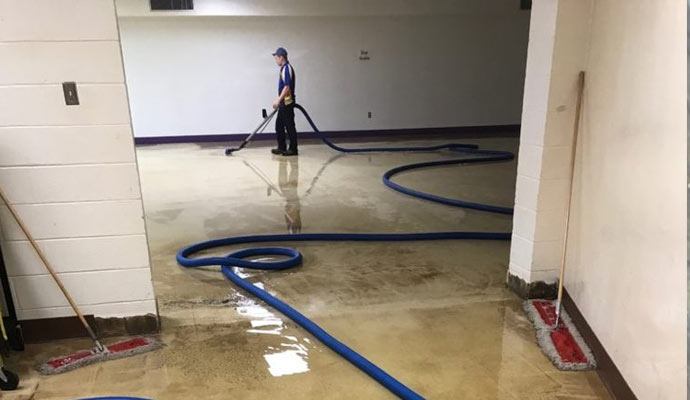Common mistakes to avoid when hiring Flood Cleanup Services
Wiki Article
Water Damage Restoration 101: Understanding the Process and Price
Water damage can strike suddenly, leaving home owners in a state of complication. Understanding the reconstruction procedure is important for efficient recuperation. From reviewing the damage to choosing the ideal company, each step impacts the total outcome and expense. Factors such as the kind of water damage and urgency likewise play a considerable function. What are the particular methods made use of in remediation, and exactly how can one prepare for potential expenses?Kinds Of Water Damage
Water damage can emerge from various resources, each providing distinct challenges for restoration. The 3 primary kinds of water damage are categorized based on contamination degrees: clean water, gray water, and black water. Clean water stems from sources like damaged pipelines or rain, posing very little health and wellness threats. Gray water, that includes wastewater from sinks or washing devices, includes pollutants that may cause pain or ailment if consumed. Black water, one of the most unsafe classification, comes from sewer or floodwaters, including damaging microorganisms and pathogens. Each kind requires specific repair strategies and safety measures to successfully mitigate and attend to the damage health and wellness risks. Comprehending these differences is essential for specialists and property owners included in the water damage remediation process.Preliminary Analysis and Examination
An extensive first assessment and inspection are crucial steps in the water damage reconstruction procedure. This phase begins with a professional assessing the extent of the damage, recognizing the resource of the water breach, and establishing the kind of water entailed - Water Damage Restoration. Service technicians use specific tools to measure dampness degrees in various materials, such as wall surfaces, floors, and furnishings. Furthermore, they analyze architectural honesty and possible carcinogen, including mold and mildew growth. The searchings for from this examination educate the repair strategy, leading needed activities and source allocation. Accurate paperwork of the damage is vital for insurance cases and future referral. In general, this first assessment prepares for reliable repair, making certain a detailed response to the certain situation handy

Water Removal Strategies
Following the initial assessment, reliable water removal techniques are used to alleviate damage and avoid further concerns. These methods involve the usage of customized devices such as completely submersible pumps and industrial-grade vacuum cleaners. The choice of method depends upon the quantity of water existing and the kind of products affected. For standing water, submersible pumps are usually utilized for fast elimination, while vacuums are excellent for drawing out water from rugs and upholstery. In addition, progressed techniques like water extraction floor coverings might be used for hard-to-reach locations. The objective is to get rid of as much water as feasible, lessening the potential for mold development and architectural damage. Prompt and effective water removal is important in the total water damage remediation process.Drying and Dehumidification Process
When the water extraction is total, the drying out and dehumidification process comes to be important to bring back the afflicted area. This phase commonly uses industrial-grade dehumidifiers and air movers to properly reduce moisture degrees. The dehumidifiers reel in damp air, eliminating excess moisture, while air moving companies circulate air to accelerate evaporation. Monitoring equipment is frequently utilized to track moisture and temperature levels, guaranteeing ideal drying conditions. The duration of this procedure can vary depending on the degree of the water damage and ecological elements. It is important to extensively dry all impacted products, including walls, floor covering, and home furnishings, to stop mold and mildew growth and architectural damage. Appropriate execution of this action is vital for a successful repair end result.Cleaning Up and Sanitizing Damaged Areas

Preliminary Assessment and Inspection
Before beginning any type of restoration efforts, an extensive preliminary analysis and inspection of the affected locations are important for efficient cleaning and sterilizing. This procedure entails determining the level of water damage, identifying the resource of the water invasion, and examining the materials influenced. Examiners commonly search for signs of mold and mildew growth, structural stability problems, and harmed items. The assessment likewise includes inspecting moisture levels making use of specialized tools to ensure no concealed water pockets remain, as these can bring about more problems. Recording the findings is necessary for preparing the next action in the repair procedure. A detailed initial analysis enables reconstruction professionals to devise a targeted method for effective cleansing and sterilizing, ultimately decreasing damage and health dangers.Cleaning Strategies and Products
Efficient cleansing and sterilizing of water-damaged locations need a selection of strategies and products tailored to the specific materials affected. For permeable surfaces like drywall and carpets, extraction approaches are necessary to get rid of excess dampness, adhered to by deep cleaning with specialized cleaning agents. Non-porous products such as floor tile or metal can be cleaned using commercial-grade cleaners that properly remove pollutants. Steam cleansing is an additional effective method, specifically for carpetings and upholstery, as it utilizes heats to eliminate bacteria and mold. Additionally, eco-friendly items are significantly preferred for their safety and effectiveness. Inevitably, picking the ideal cleaning approaches and items not just guarantees immediate sanitation yet additionally aids in avoiding further damage and wellness hazards related to water breach.Sanitization and Disinfection Methods
When addressing water damage, appropriate sanitization and sanitation methods are necessary to guarantee the safety and health of the damaged setting. After first cleaning, surfaces should be treated with ideal disinfectants to get rid of pathogens, mold, and germs that prosper in damp problems. Typical techniques consist of making use of EPA-approved chemical anti-bacterials, which can be used through spraying or wiping techniques. In addition, ultraviolet (UV) light systems can successfully sanitize areas by reducing the effects of bacteria without harsh chemicals. The selection of approach often depends upon the kind of materials influenced and the extent of contamination. Inevitably, thorough sanitization not only brings back a risk-free home however additionally helps avoid future health threats linked with sticking around dampness and mold and mildew development.
Fixings and Restoration Options

Factors Influencing Restoration Expenses
The level of water damage straight influences the repair sets you back house owners can expect to sustain. Elements such as the resource of the water, the period of exposure, and the afflicted products significantly influence pricing. Clean water damage from a busted pipe is usually less expensive to bring back compared to damage caused by sewer (Flood Cleanup Services). Additionally, the degree of contamination determines the need for specialized cleansing and disposal solutions, better raising expenditures. Geographic area also contributes, as local labor prices and accessibility of repair services can differ. Ultimately, the seriousness of the action impacts expenses; quicker interventions usually result in reduce overall expenditures by avoiding more damage. Comprehending these aspects is crucial for homeowners when approximating remediation pricesThe 3 primary types of water damage are classified based on contamination levels: tidy water, grey water, and black water. A thorough first evaluation and assessment are important steps in the water damage restoration procedure. For standing water, completely submersible pumps are generally utilized for fast elimination, while vacuums are optimal for removing water from rugs and furniture. The extent of water damage directly influences the restoration costs house owners can expect to incur. Tidy water damage from a busted pipe is usually less expensive to recover compared to damage caused by sewage.
Report this wiki page